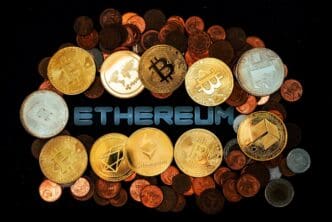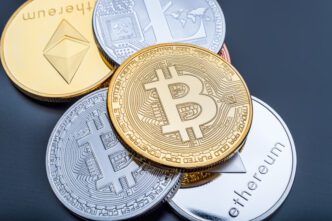Executive Summary
The Story So Far
Why This Matters
Who Thinks What?
The long-standing “war” between Ethereum and Solana, once framed as a direct competition between Layer-1 blockchains, has quietly concluded with a fundamental architectural divergence in 2025. Rather than one platform emerging victorious, Ethereum has solidified its role as a modular settlement layer, while Solana has committed to being a unified, high-throughput execution layer, each optimizing for different use cases and offering distinct trade-offs to developers.
Architectural Divergence Defines New Landscape
Ethereum abandoned the monolithic-chain race years ago, evolving its base layer into settlement infrastructure where execution predominantly occurs on Layer-2 (L2) rollups. These L2s then post state roots back to the Ethereum mainnet. In contrast, Solana doubled down on a monolithic design, featuring a single unified ledger, sub-second slot times, and a Proof-of-History pipeline that sequences transactions in a global ledger.
Both approaches aim to deliver transactions that feel instantaneous to users. However, their security models diverge significantly when considering the assurances provided in the seconds, minutes, or days following a transaction. The core question for builders in 2026 is not which chain is inherently faster, but rather which model offers greater efficiency and lower friction for their specific application, weighing factors like latency, complexity, and exit times.
Ethereum’s Modular Evolution
Ethereum’s modular design separates inclusion, confirmation, and economic finality. L2s like Arbitrum and Optimism sequence transactions off-chain, providing “soft” finality to users once a sequencer accepts a transaction. Economic finality, however, only arrives when the rollup posts its state root to the L1 and the dispute or validity window closes.
Optimistic rollups typically impose a seven-day challenge period for withdrawals to the mainnet, while ZK rollups compress this to minutes or a few hours using validity proofs. According to Will Papper, co-founder of Syndicate, this delay often matters less than it appears, as many instant bridges operate comfortably on non-finalized rollup states. The introduction of Dencun’s blob in March 2024 and Pectra’s capacity increases in May 2025 have driven typical L2 transaction fees to single-digit cents.
Ethereum’s failure modes tend to be localized; an L2 sequencer going offline can pause user activity on that specific rollup, even if the Ethereum L1 remains operational. Examples include Base’s 45-minute halt in September 2023 and multi-hour disruptions on Optimism and Starknet in 2024-25. Fault proofs and force-inclusion mechanisms are designed as escape hatches to mitigate these localized risks.
Solana’s Monolithic Bet
Solana’s architecture collapses inclusion, confirmation, and economic finality into a single 400-millisecond slot when operating optimally. Validators vote on blocks using a Proof-of-History clock, allowing the network to pipeline throughput without waiting for traditional Byzantine Fault Tolerance (BFT) round-trips. Users typically see confirmations within half a second, with complete finality arriving around 12 seconds later.
Jakob Povšič, co-founder of Temporal, noted that for most end users, a transaction is considered “confirmed” once two-thirds of the network has voted on its block, which takes less than half a second. Solana’s base fee remains fixed at 5,000 lamports, approximately $0.0001 per signature, with priority fees allowing users to bid for inclusion during traffic spikes. Most retail transactions cost less than one cent.
Unlike Ethereum’s localized failures, Solana’s monolithic design means the system fails globally if a critical issue arises. The Feb. 6, 2024, Solana halt, which lasted four hours and 46 minutes due to a legacy loader bug, serves as a prominent example. Solana has no withdrawal window because transactions settle directly on the L1, collapsing “finality” and “withdrawal” into the same 12-second threshold.
Future Catalysts and Upgrades
Solana’s primary catalyst is Firedancer, the independent validator client developed by Jump Crypto. Public demonstrations have shown throughput capabilities far exceeding the current Agave client. Povšič highlighted a significant cultural shift towards security and reliability within Solana’s core development teams, emphasizing that Firedancer’s rollout will introduce client diversity, reduce single-implementation risk, and push latency and throughput ceilings higher. The Alpenglow runtime aims for sub-150-millisecond finality.
Ethereum’s roadmap includes several near-term upgrades. Pectra, delivered in May 2025, increased blob throughput. Fusaka, slated for the current quarter, will ship PeerDAS, a peer-based data availability sampling system. Glamsterdam in 2026 plans to enshrine proposer-builder separation (PBS) and introduce inclusion lists, enhancing censorship resistance. Papper argued that cheaper data availability (DA) will drive the most immediate gains for Ethereum, leading to lower fees for every rollup transaction.
Choosing the Right Platform
The architectural divergence means that each platform now caters to specific application needs. For high-frequency trading and market-making, where milliseconds are critical, Solana’s single-slot path, stake-weighted Quality of Service (QoS), and Jito bundles offer advantages. Povšič noted that Solana’s infrastructure has matured considerably, moving past earlier outage risks.
On-chain games and social applications that rarely require settlement on L1 are well-suited for Ethereum’s L2s. Arbitrum’s 250-millisecond blocks provide an instant feel, and post-Dencun fees compete with Solana’s sub-penny economics. Builders on L2s inherit Ethereum’s robust settlement layer when needed, with preconfirmations further compressing latency.
For payments and consumer DeFi, the choice hinges on fees and exit flows. If users rarely bridge to L1, L2 user experience can directly compete with Solana. However, if an application demands frequent mainnet settlement or atomic composability across many accounts, Solana’s unified ledger simplifies the architecture. Povšič emphasized Solana’s key developer advantage: the simplicity of the global shared state, eliminating the complexities of bridging or data availability concerns.
The End of a “War”
In 2026, the competitive question is no longer whether Solana or Ethereum is unilaterally faster or cheaper. Instead, it revolves around which model better aligns with the latency, cost, and finality requirements of a specific application. Solana’s bet is on collapsing execution, settlement, and finality into a single, rapid slot, pushing that envelope with Firedancer. Ethereum’s bet is on separating these concerns, allowing L1 for settlement and L2s for execution to specialize and scale independently, with cheaper blobs and maturing fault proofs closing the user experience gap.
Users ultimately prioritize a composite metric of time-to-confirmed-user-experience, cost, and reliability. Both ecosystems optimized different parts of this curve in 2025, and upcoming 2026 upgrades will further test whether monolithic throughput or modular scaling delivers the superior product at scale for diverse workloads.








